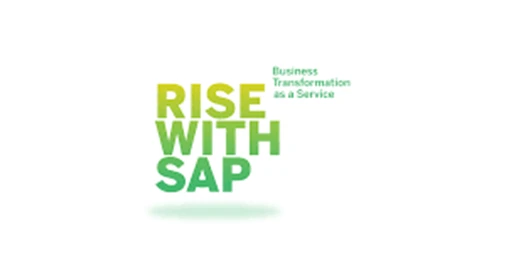Rise With SAP – Soaring Transformation or Turbulent Skies Ahead?
Rise With SAP – Soaring Transformation or Turbulent Skies Ahead?
Since its launch in January 2021 to much fanfare, SAP’s “Rise with SAP” has taken the enterprise software world by storm, promising a transformative journey towards the “intelligent enterprise.” At its core lies the vision of a seamless transition to a cloud-based S/4HANA ERP system, bundled with cloud infrastructure, managed services, and SAP’s latest solutions – all delivered through a subscription-based model. Various flavours of cloud-based ERP are on offer here:
– S/4HANA public cloud edition – this is the true Software-as-a-Service (SaaS) offering, and used to be known as SAP S/4HANA multi-tenant edition. As a SaaS solution, there are limited rights to customisation as you are purchasing a standardised, subscription system.
– S/4HANA private cloud edition – this is more closely related to a traditional on-premise offering in terms of the application and its functionality. What is different is the administration of the hosting, the disaster recovery, upgrades, and all the infrastructure – all of which is managed by SAP.
Let’s take a quick look at the bundled services on offer as part of Rise:
• SAP S/4HANA, public or private cloud edition
• Credits to be used towards the Business Technology Platform (BTP)
• Starter pack for SAP Business Network – a suite of products combining ARIBA for sourcing and procurement, Logistic Business Network for logistics collaboration, and SAP Asset Intelligence Network for asset management
• Starter pack for SAP Signavio (process mining tool)
• Access to SAP industry Cloud Solutions, from SAP and selected partners
• Upgrade tools including SAP Readiness Check and Custom Code Migration app
• SAP Enable Now (guided learning tool)
• SAP Cloud ALM (application lifecycle management)
• Technical managed services and Application managed services provided by SAP
• Ability to flex immediately to suit business requirements, via a hyperscaler of your choice, such as AWS, Google Cloud Platform or Microsoft Azure.
On paper, the concept seems alluring. No more complex on-premises installations, no expensive hardware investments, and no lengthy upgrade cycles. Just a sleek, unified cloud platform that can revolutionise your business processes and propel you into the digital future. All under a single, unified contract. The strap line for the offering is “Business Transformation as a Service”.

But as with any bold innovation, Rise with SAP has sparked a polarising debate within the SAP ecosystem. Let’s delve into the potential promises and pitfalls of this audacious offering.
The Siren Song of Simplicity
For enterprises grappling with aging, monolithic ERP systems, the promise of a streamlined, cloud-based alternative is undeniably tempting. Rise with SAP combines SAP’s latest technologies, such as S/4HANA, SAP Analytics Cloud, and intelligent robotic process automation, into a unified package.
By offloading the technical complexities to SAP, organisations can (in theory) focus their resources on driving business innovation rather than managing IT infrastructure. This aligns with many organisations’ culture of running value-stream mappings in order to focus all their energies on the value-added components of their organisational make-up, and outsource everything else.
The subscription-based pricing model also promises a more predictable cost structure, aligning IT expenses with business outcomes.
Furthermore, Rise with SAP positions itself as a catalyst for digital transformation, enabling organisations to embrace emerging technologies like Artificial intelligence (AI), the Internet of Things (IoT), machine learning, and advanced and predictive analytics – all while leveraging the familiarity and robustness of the SAP ecosystem.
Clouds of Concern
While the value proposition sounds compelling, some industry veterans have raised valid concerns about the potential drawbacks and risks associated with Rise.
- Data Sovereignty and Vendor Lock-in
As organisations migrate their mission-critical systems to the cloud, concerns around data sovereignty and vendor lock-in loom large. By embracing Rise, are enterprises not trading one form of dependence (on-premises hardware) for another (cloud vendor reliance)?
The implications of vendor lock-in extend beyond technical dependencies. As SAP becomes the sole provider of cloud infrastructure, managed services, and software solutions, organisations may find themselves with limited negotiating power and fewer options for alternative vendors or pricing models.
- Migration Complexities and Cultural Shifts
The transition to Rise is not merely a technical migration; it’s a transformative journey that requires a significant cultural shift within organisations. Adopting the “intelligent enterprise” mindset necessitates redefining business processes, upskilling workforces, and embracing agile methodologies – changes that can be daunting for established enterprises.
Moreover, SAP’s track record with major upgrades and migrations has not always been flawless. The move from legacy systems to ECC6.0, for instance, was fraught with challenges for many organisations. As Rise promises a more comprehensive transformation than those moves, the potential for disruptions and unforeseen complexities cannot be overlooked.
- The Partner Paradox
One of the most controversial aspects of Rise is its potential impact on the vast ecosystem of SAP partners and service providers. By offering a one-stop-shop solution encompassing cloud infrastructure, managed services, and software solutions, SAP appears to be encroaching on the territory traditionally occupied by its partners.

This move has raised concerns among SAP’s long-standing partners, who have played a pivotal role in driving the adoption and success of SAP solutions over the decades. Some fear that Rise could undermine their businesses or relegate them to mere implementation partners, diminishing their strategic value.
However, SAP themselves prefer to argue that Rise presents new opportunities for partners to specialise in high-value services, such as industry-specific solutions, custom development, and change management consulting. Certainly, the Business Technology Platform (BTP), which is embedded within Rise offerings allows partners to design new solutions and market them to Rise customers.
- The Long-Term Cost Conundrum
While the subscription-based pricing model promises predictable costs, some industry analysts have raised concerns about the long-term financial implications of Rise. As organisations become more deeply entrenched in SAP’s cloud ecosystem, their bargaining power may diminish, potentially leading to escalating costs over time. In more traditional on-premise models, much of the initial licensing outlay was a capital expense, incurred up front, with a much lower annual operating expense to cover maintenance. With the Rise pricing model, the costs are flattened out over the course of the subscription, on an annual operating expense basis, covering not just licensing, but all other aspects of a platform-as-a-service too. Attractive in the short-term, but as organisations start to look at longer term cost of ownership, beyond five years, the Rise costs begin to look high.
Additionally, the true cost of ownership extends beyond subscription fees. Organisations must factor in potential costs associated with data migration, system integrations, change management, and workforce upskilling – expenses that could rapidly accumulate, particularly for large, complex enterprises.
Nevertheless, the old adage “you get what you pay for” may ring true here. It is not appropriate to compare a modern cloud computing system with an aging ECC6.0 on premise solution, so comparisons in this regard are unfair. However, if we compare on-premise S/4HANA systems pre 2021 with Rise costs, we are more into an effective comparison. However, it is vital not to overlook many of the “hidden” costs which organisations incur with on-premise deployments: hosting, infrastructure and server maintenance and upgrades, disaster recovery, compliance and validation efforts etc.
In short, ensure you are comparing apples to apples.
Navigating Rise
Amidst the polarising debates and conflicting viewpoints, one thing is clear: Rise with SAP represents a seismic shift in the SAP landscape. Whether you view it as a revolutionary innovation or a risky gamble, the time to educate yourself and prepare your organisation is now.
For SAP customers and professionals, the path forward requires a strategic, well-informed approach. Conduct thorough due diligence, assess your organisation’s readiness, and weigh the potential benefits against the risks and costs. Engage with SAP, industry experts, and peers to gain diverse perspectives and insights.

And for those seeking guidance on navigating this complex journey, specialised SAP consultants and architects can provide invaluable support. Additionally, Systems Integrators are becoming more and more well-versed in the intricacies and complexities of Rise. These professionals can help you chart your course, whether you’re an individual SAP professional exploring career opportunities or an organisation embarking on a transformative digital journey.
The decision to “Rise with SAP” is not one to be taken lightly. It demands a careful evaluation of your organisation’s unique circumstances, priorities, and long-term goals. By staying informed, seeking expert guidance, and making strategic choices, you can soar towards the intelligent enterprise or steer clear of turbulent skies – the choice is yours.